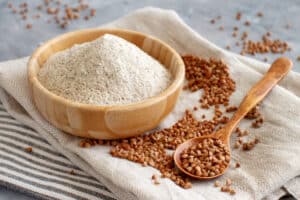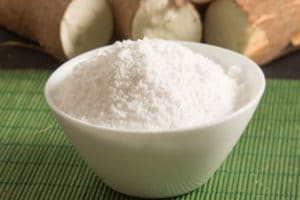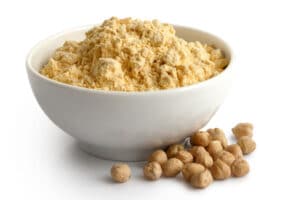Sweet rice flour is a naturally gluten-free flour that’s a popular starch when baking. This starch helps add much-needed moisture to baked goods so that they’re not too dry. It’s one of the most preferred starches for those who are gluten-free people and bakers.
If you are cooking something that needs sweet rice flour but don’t have any on hand, tapioca flour is likely your best bet. The starchy and powdery sweet rice flour is known well for being a key ingredient in baked goods and sauces as well as being used to thicken dishes such as stews or soups.
While you can’t just throw any kind of flour into the mix when sweet rice flour is called for, there are multiple options for a sweet rice flour substitute if you don’t have any lying around.
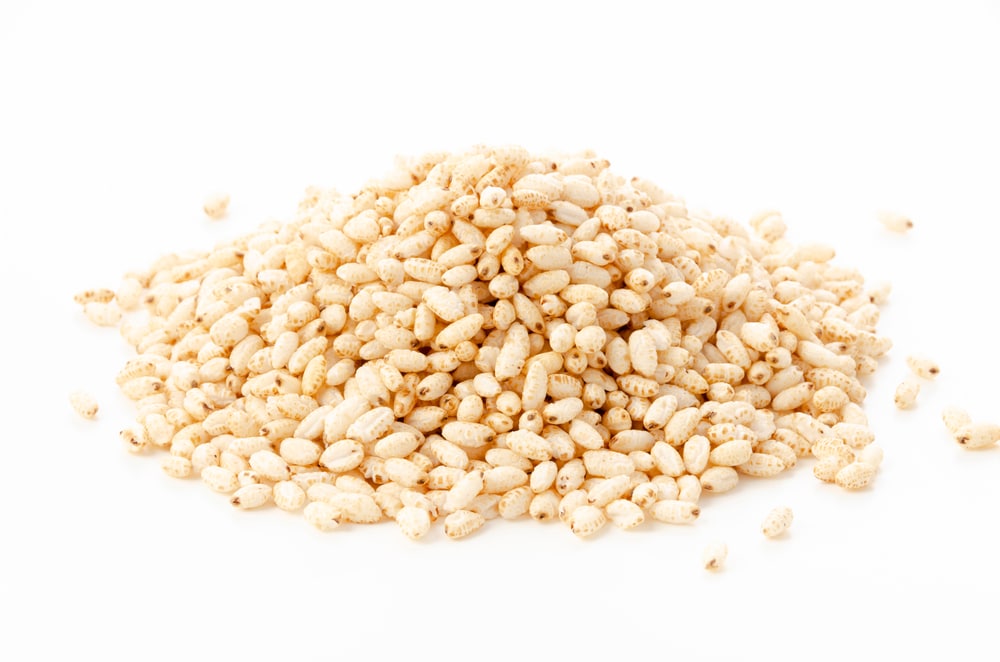
5 Recommended Sweet Rice Flour Substitute
Our 5 recommended substitutions for sweet rice flour are:
- Tapioca flour
- Cornstarch
- Coconut flour
- Potato starch
- Sorghum flour
Tapioca Flour: Best Sweet Rice Flour Substitute
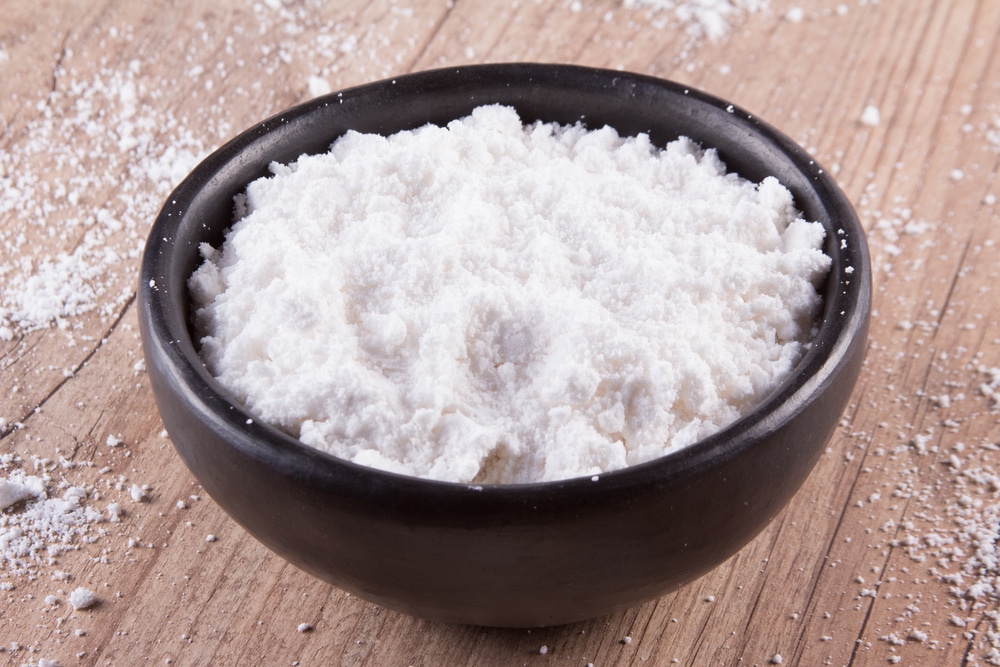
One of the best candidates for a sweet rice flour substitute is tapioca flour.
Tapioca flour shares many of the same features as sweet rice flour. This allows equal quantities usage when compared to the amount of sweet rice flour needed for a recipe. As a result, it’s one of the easiest substitutes to work with.
There is one small difference of note. While sweet rice flour does have some semblance of sweetness to it, tapioca flour is essentially tasteless. Most of the similarities between the two revolve around texture and water absorption.
You can add a small quantity of sugar to account for this difference. If you plan on adding sugar to another sweetener to the tapioca flour, you’ll need to be very careful. Adding too much can cause it to be painfully sweet and throw off the flavor of whatever you’re making.
Cornstarch
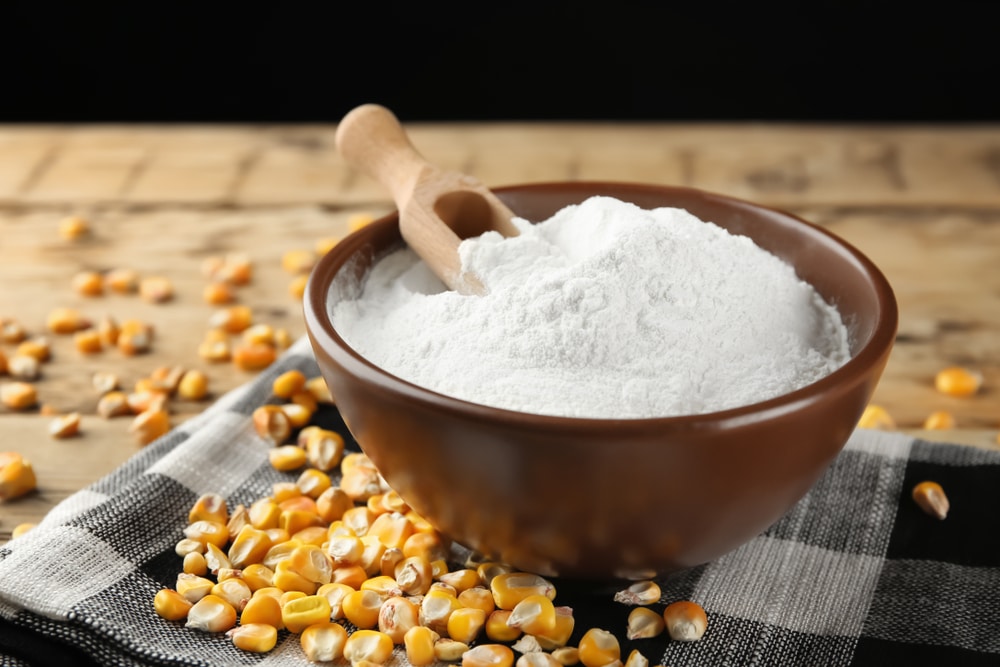
If you’re needing something to act simply as a thickening agent in your sweet rice flour substitution, then cornstarch can work in a pinch.
The ratios between cornstarch and sweet rice flour are similar, but there are a couple of key differences to be aware of.
One difference is that while sweet rice flour will thicken liquid immediately, corn starch
will thicken as it heats up. If you think more thickener is needed, this is something to be mindful of.
Typically corn starch is best when whisked into a cold liquid and then gradually added (as needed) to hot liquids. Mind this process carefully to try and prevent lumps from developing in the liquid.
The ratio between cornstarch and sweet rice flour is generally the same. You’ll use two tablespoons of sweet rice flour to thicken one cup of liquid. You can start with the same amount when using cornstarch and then see.
While this may work most of the time, you may notice you’ll need to add more cornstarch to achieve the desired thickness. You’ll need to use your discretion.
Corn starch also typically develops a bit of a glossy shine to it, which does not happen with sweet rice flour. This isn’t a huge deal, but worth noting.
Coconut Flour
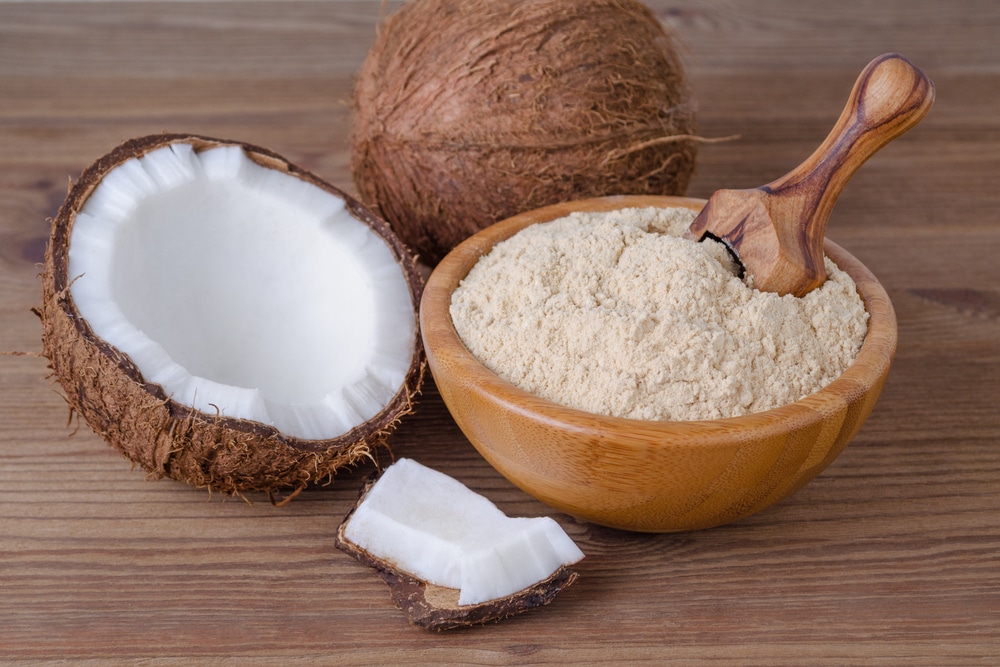
One of the appeals of sweet rice flour is that it is a rather light and gluten-free ingredient. Coconut flour has similar characteristics making it one of the best substitutes.
While it is an acceptable substitute, there are a few things to note with this one when using it in place of sweet rice flour.
Firstly, the ratios for how much of an ingredient to use are not precisely 1:1. It’s more like 1.5:1, for example, 1.5 cups of coconut flour per cup of sweet rice flour that the recipe calls for. Since the ratios when using coconut flour aren’t precise, you’ll want to start with 1:1 and add more as you need.
Second, coconut flour is a bit sweeter than sweet rice flour and has a noticeable (but mild) coconut flavor to it. Many people may not even taste the difference in the finished product, but it’s something to keep in mind since some may be able to.
And finally, coconut flour isn’t as sticky. A binding agent may need to be added or the amount of liquid adjusted in order to attain the desired thickness or texture of the batter.
Potato Starch
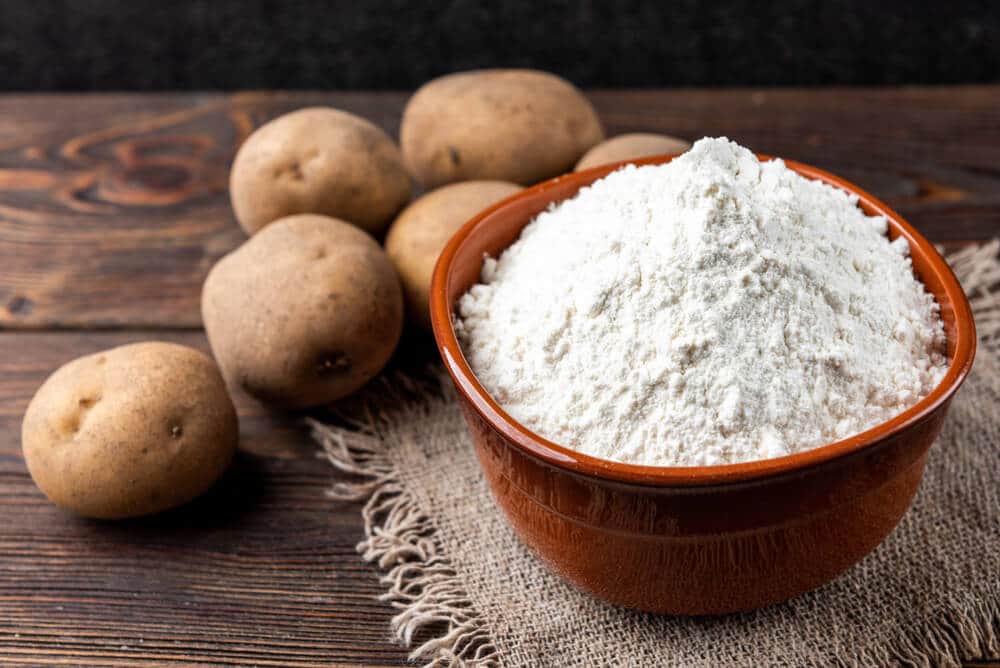
Like tapioca starch, potato starch shares many similar properties that make it a great candidate for sweet rice flour substitution. One of the main differences between sweet rice flour and potato starch is that sweet rice flour is gluten-free and potato starch isn’t.
As the name implies, it comes from potatoes and is used as a thickening agent that’s also suitable for holding the moisture in baked goods. When using this substitute, you can use a 1:1 ratio. A simple ratio like this makes things much easier when measuring ingredients.
It’s important to keep in mind that this substitute is about as bland as it gets, as potato starch is essentially flavorless. Some sugar may need to be added at the user’s discretion, but the quantities needed should align with how much sweet rice flour is called for in the recipe.
Learn how potato starch differs from potato flour.
Sorghum Flour
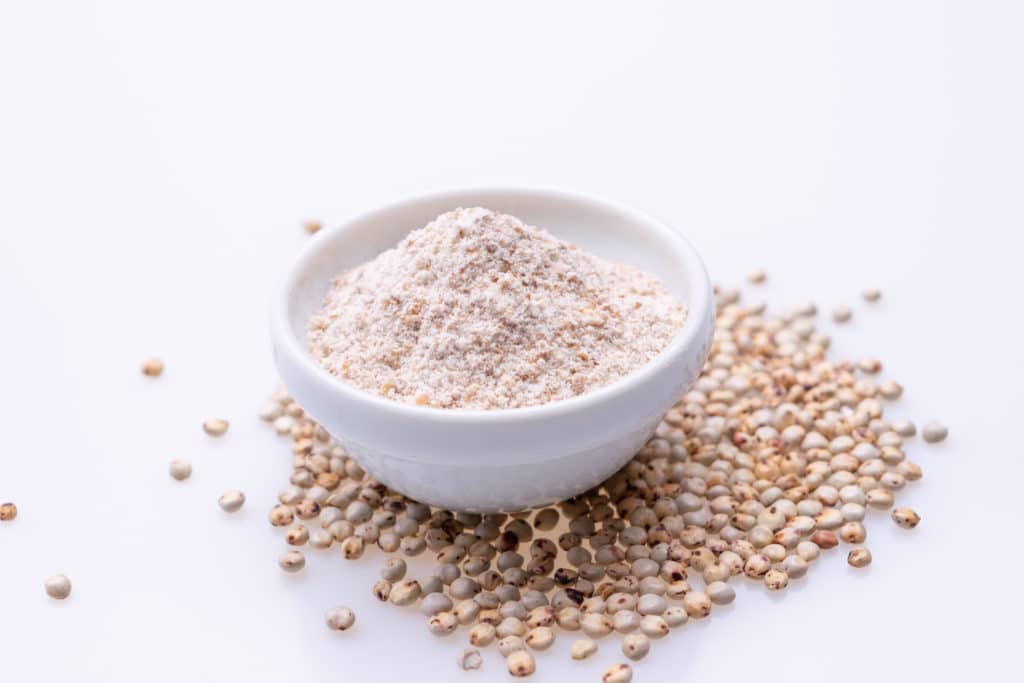
Also gluten-free and increasing in popularity among health food enthusiasts, sorghum flour is a highly nutritious option. It’s popular for making gluten-free cakes, cupcakes, and other baked goods, like sweet rice flour.
It carries with it a mild but sweet flavor similar to sweet rice flour but doesn’t act as sticky. Therefore additional binding agents may be needed. When substituting sorghum flour for sweet rice flour, you’ll use the same amount that the recipe calls for. That being said, you may need additional water or flour depending on how well the sorghum flour is binding.
Some experimenting with the correct ratios will likely be necessary for this particular substitution to achieve the desired effect. You can start with equal ratios but add sorghum as needed for consistency or add liquid as needed for stickiness (this is a potential alternative to adding additional binding agents to the mix.
Related Questions
If you still have questions about what to use as a sweet rice flour substitute, here are some of the most commonly asked questions on the topic and their answers.
Can I use rice flour instead of sweet rice flour?
The short answer is no; you can’t.
While the names are similar, the two types of flour are entirely different from one another. You’re probably thinking how different cornstarch from sweet rice flour is. Here’s your explanation.
Rice flour is used more for creating lightness and crispiness. In contrast, sweet rice flour is used to make a dish more sticky and binding. Their components are entirely different, as is the end result.
Even adding sweeteners to rice flour makes it an unacceptable substitution. Yes, the taste may be sweeter, but the texture won’t be the same as if you were to use sweet rice flour or another acceptable substitute. The two are simply not interchangeable.
Are rice flour and cornstarch the same?
While not exactly the same, they have similar properties for their respective purposes. This makes cornstarch an acceptable substitute, as is listed above. The main reason people can use these two ingredients interchangeably is that they’re both thickening agents.
Can I use semolina instead of rice flour?
Yes. Although, do note that rice flour has the flavor of rice itself while the semolina will carry more of an “earthy wheat” taste to it. This earthy wheat taste makes semolina better for making gluten-free pasta and other savory items than bakery items.
Can I use ground rice instead of rice flour?
The texture of ground rice is thicker and much more coarse than that of rice flour. They will cook differently, and for that reason, they are not interchangeable.
Even if you were to grind the rice down multiple times in your blender, you run the risk of the grounds not having a consistent texture. This can also throw off your recipe.
Can I make my own rice flour?
You can! Whether you have rice in your pantry and want to use it up or can’t find rice flour in your local stores, making it is pretty simple.
Some people have reported success with creating their own rice flour by using nothing more than a high speed blender. While this may work in a pinch, there are limitations. The rice can only become so fine using this method. When the flour isn’t the appropriate fineness, the recipe may not come out how you want.
A more preferable method would be to run the rice through a kitchen appliance known as a grain mill. Using a grain mill multiple times ensures that the rice flour obtains the fine powdery consistency one wants. Plus, using a grain mill allows you to control the coarseness or fineness and ensure that every grain of rice is ground consistently.
More on flour substitution:



